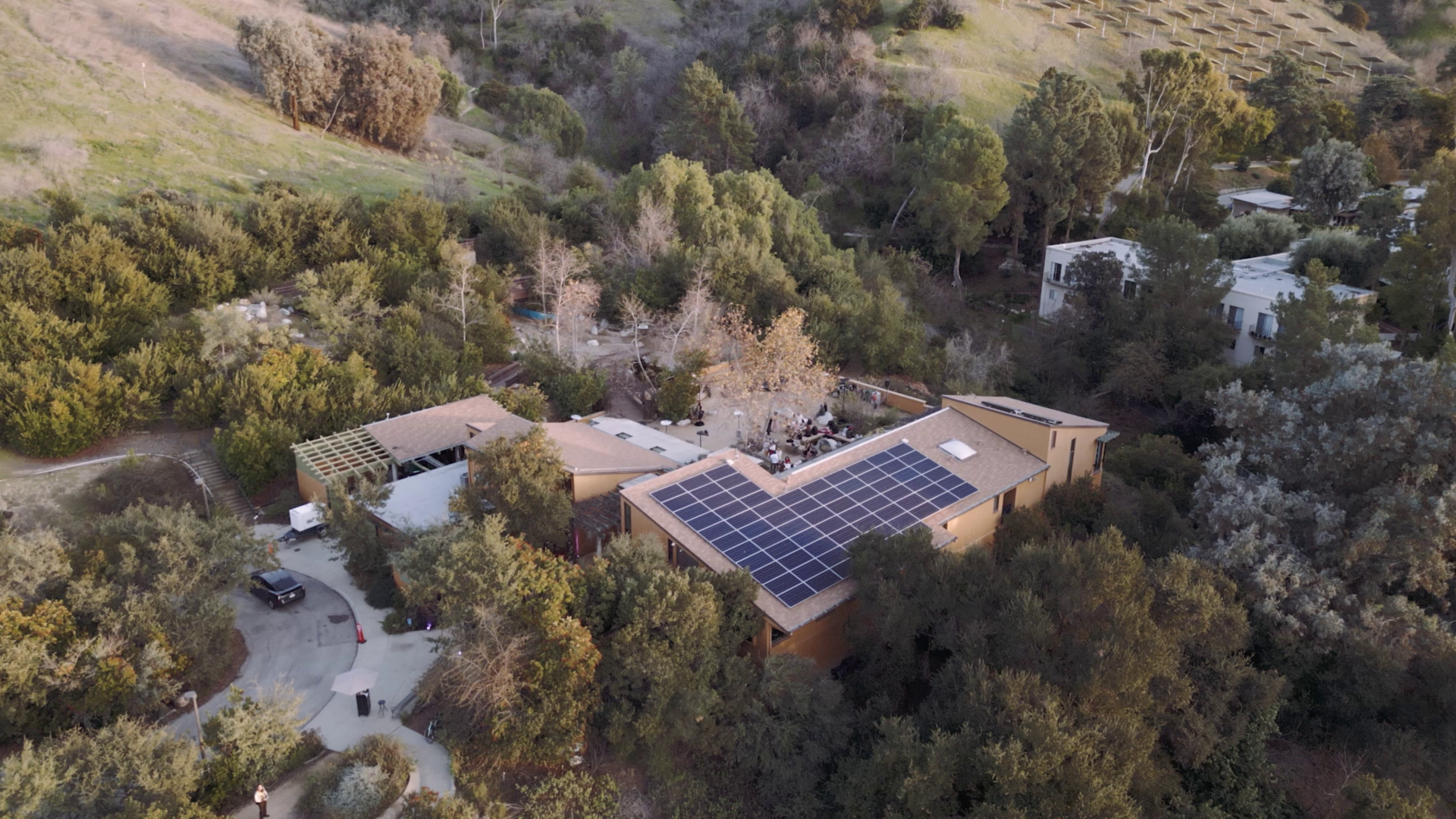
La página que intenta visitar sólo está disponible en inglés. ¡Disculpa!
The page you are about to visit is currently only available in English. Sorry!


We’re making some exciting structural upgrades at the Audubon Center at Debs Park—and if you visit or hike often, you may notice some construction. That’s because, after years of operating completely “off the grid,” the Center is officially connecting to the Los Angeles city power grid!
This transition is part of our commitment to a more resilient and climate-smart future. Through the Los Angeles Department of Water and Power’s (LADWP) Interconnection Program for Net Energy Metering (NEM), we’re joining a system that supports clean energy goals, local green jobs, and grid reliability.
Here’s how it works: our rooftop solar panels will continue to generate electricity, which first powers our building directly. When we produce more energy than we need, that excess flows back into LADWP’s grid through a special bi-directional meter—and we earn credit. On cloudy days or at night, we can draw electricity from the grid. This system allows us to reduce demand on centralized power plants, ease strain on the grid, and significantly lower our carbon footprint. In essence, the Audubon Center will function like a mini power plant!
The Audubon team has been very excited for this addition, it will help us be more reliable and efficient. When the Audubon Center at Deb Park was first envisioned it was meant to be a community hub for conservation serving the local community and an example of how conservation, this included a low carbon footprint building. In November of 2003 the Audubon Center at Debs Park earned the nation’s first LEED v2 Platinum certification. LEED stands for Leadership in Energy and Environmental Design. It is a globally recognized certification system developed by the U.S. Green Building Council (USGBC) that rates buildings on their environmental performance and sustainable design. LEED-certified buildings are designed to meet high standards for environmental performance, focusing on energy efficiency, water conservation, sustainable materials, and indoor air quality. By reducing resource use and environmental impact, these buildings help lower operating costs, promote healthier indoor environments, and contribute to climate resilience and sustainability goals. Back in 2003, a maximum of 69 points were possible under the LEED system and our center scored an impressive 53.
These features have made the Audubon Center at Debs Park a national example of sustainable design. Beyond its environmental benefits, the building is a living classroom. Demonstrating to visitors and community members how climate-smart buildings can function beautifully and efficiently. You can see many of these green design elements on display in our Audubon Outfitters, also known as our welcome center, where we have samples of some of the original materials used.
As we prepare for full interconnectivity, some walking paths and trails may be temporarily impacted by construction. We appreciate your patience during this transition, and we’re excited to step into a greener, more connected future together.